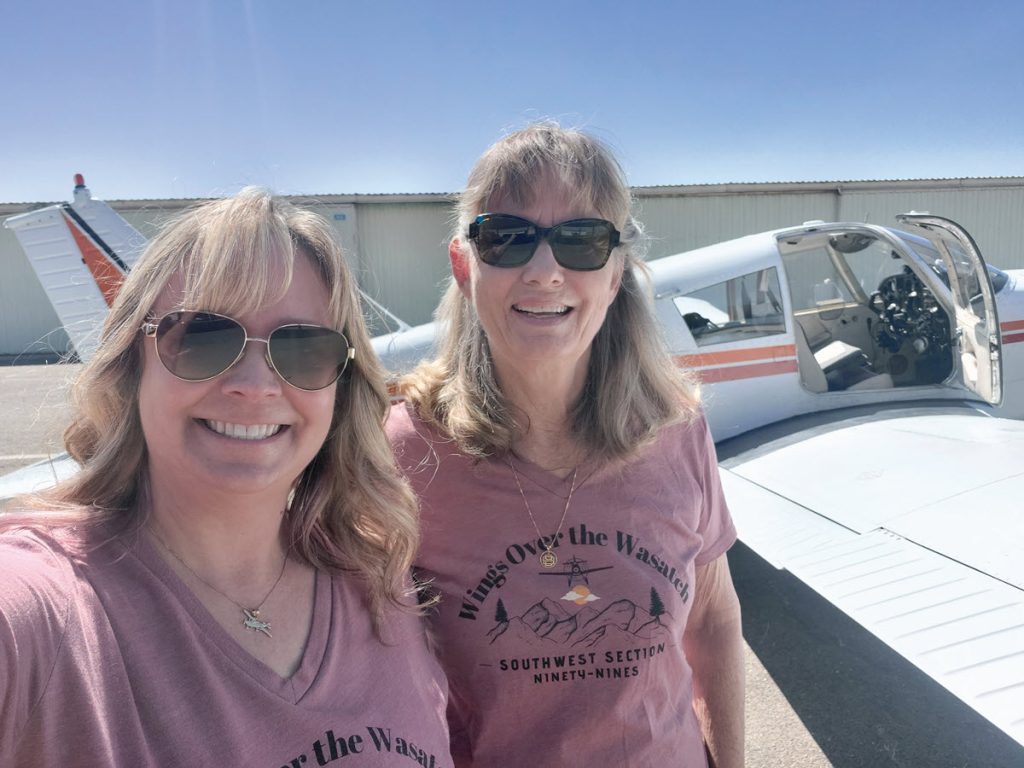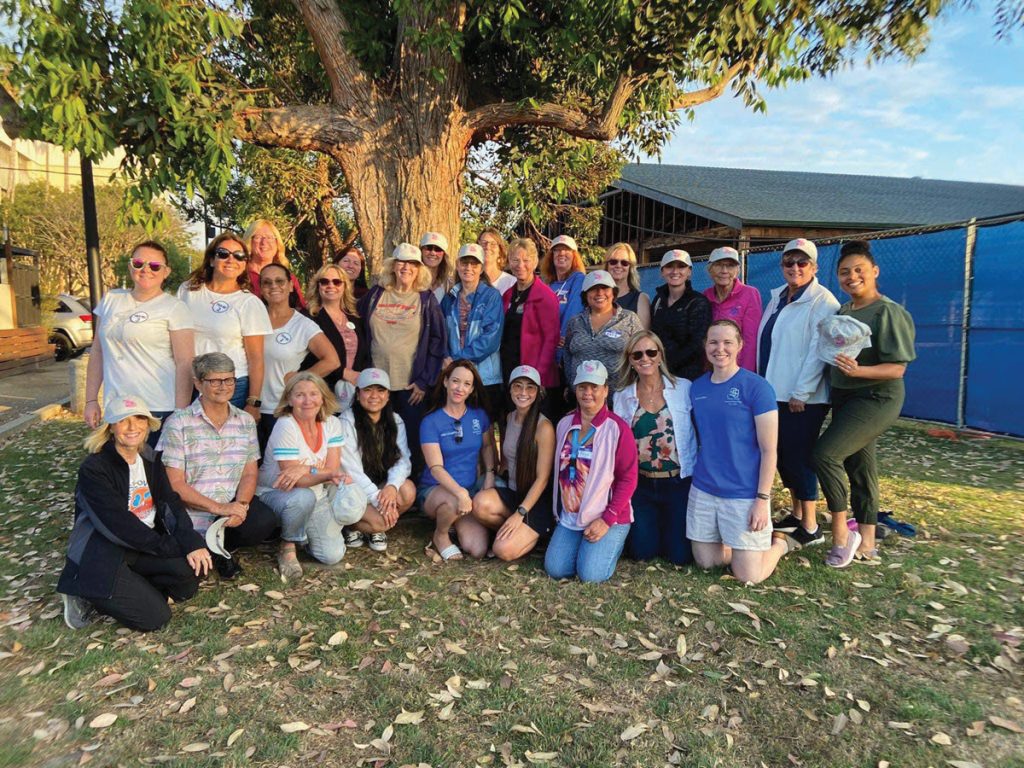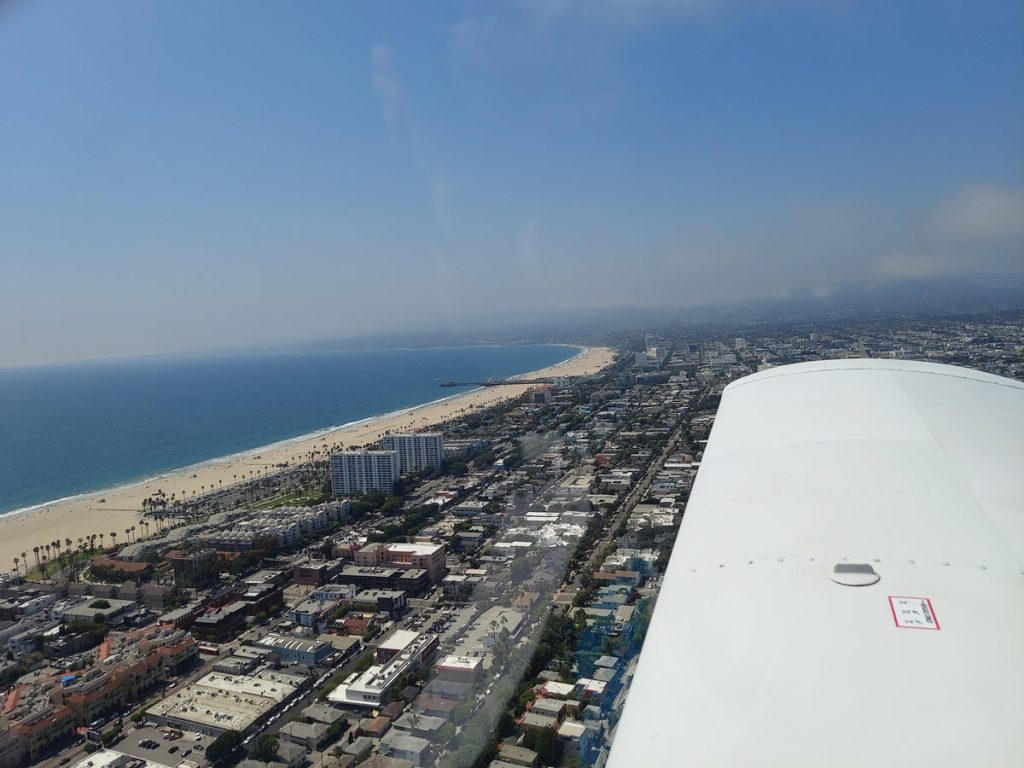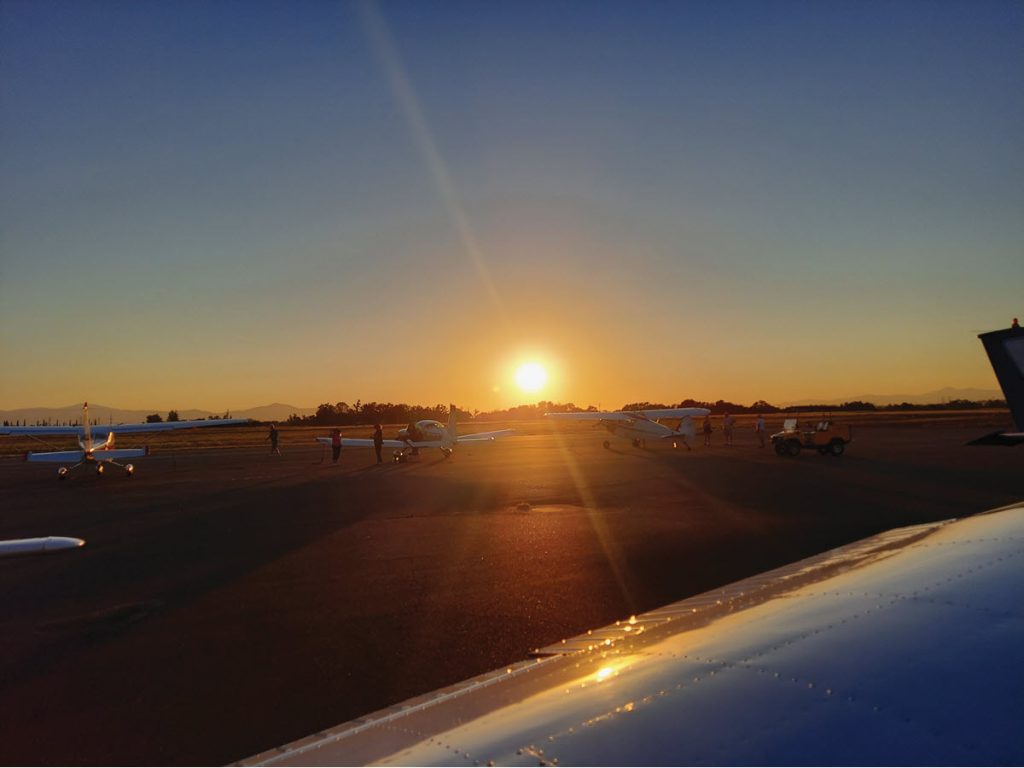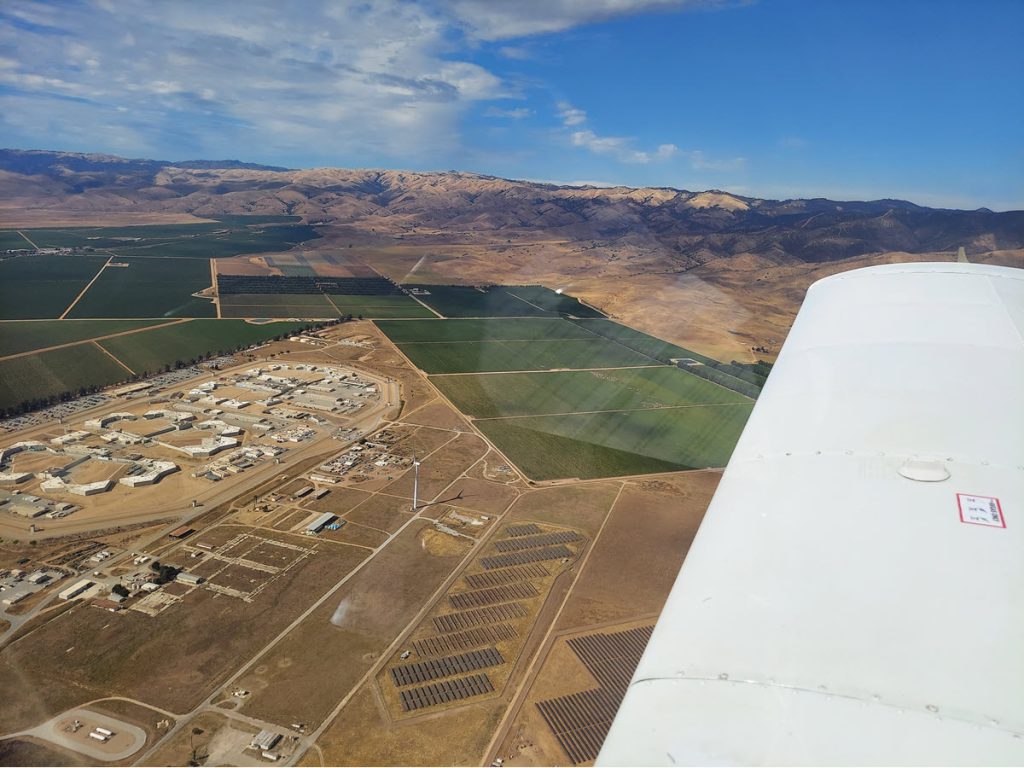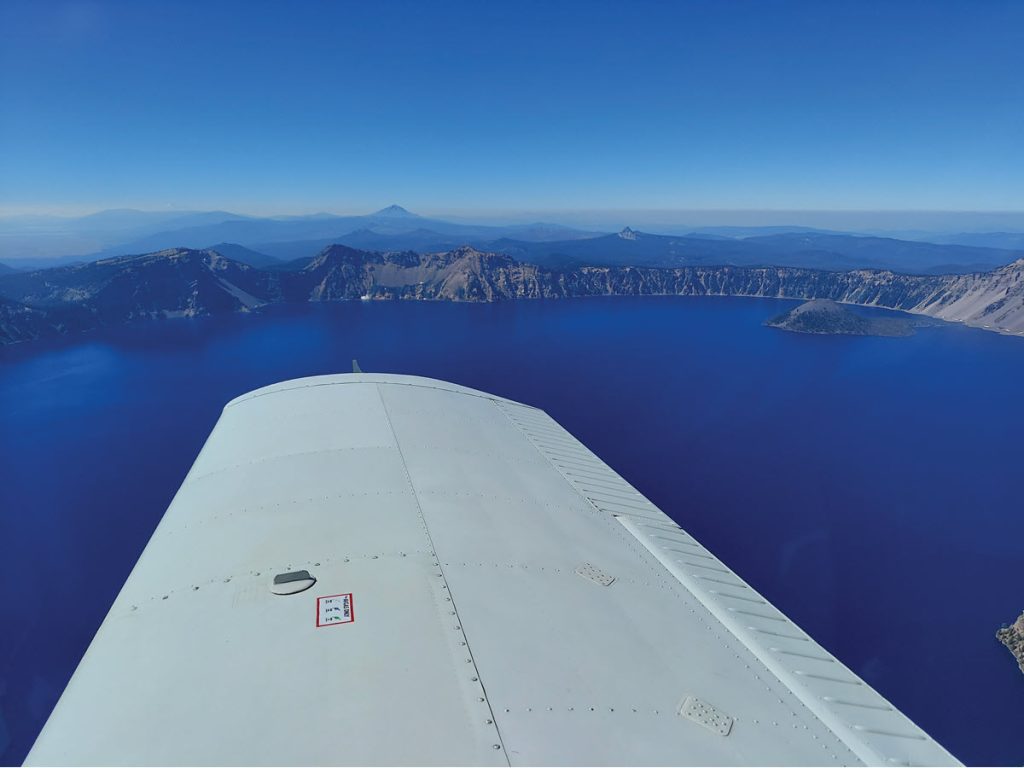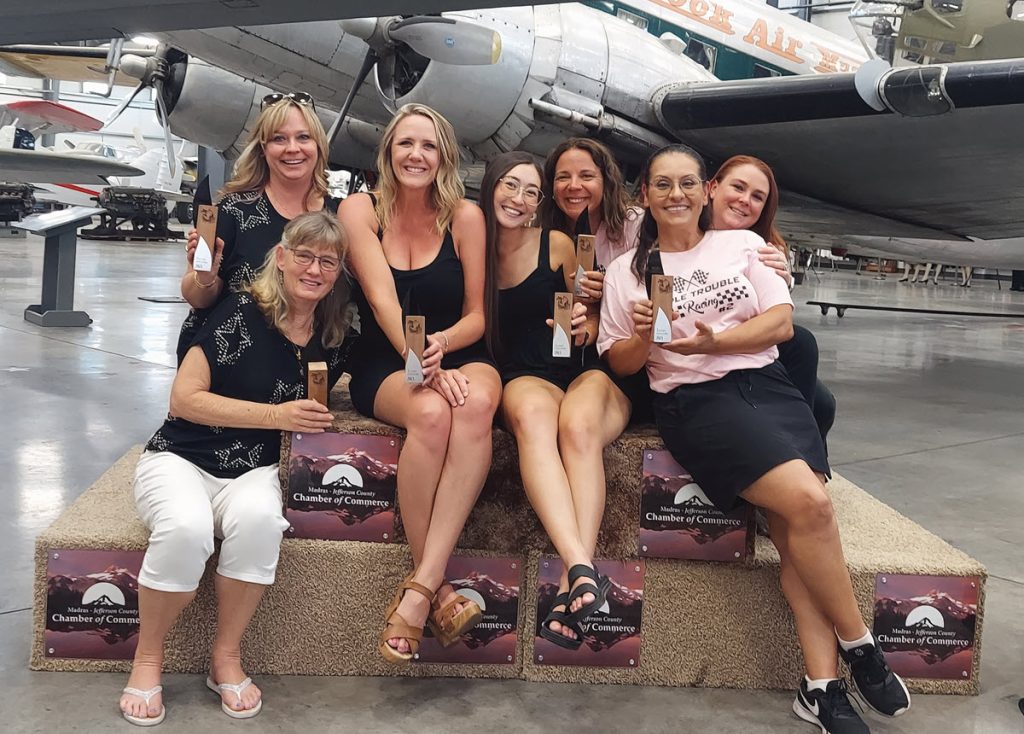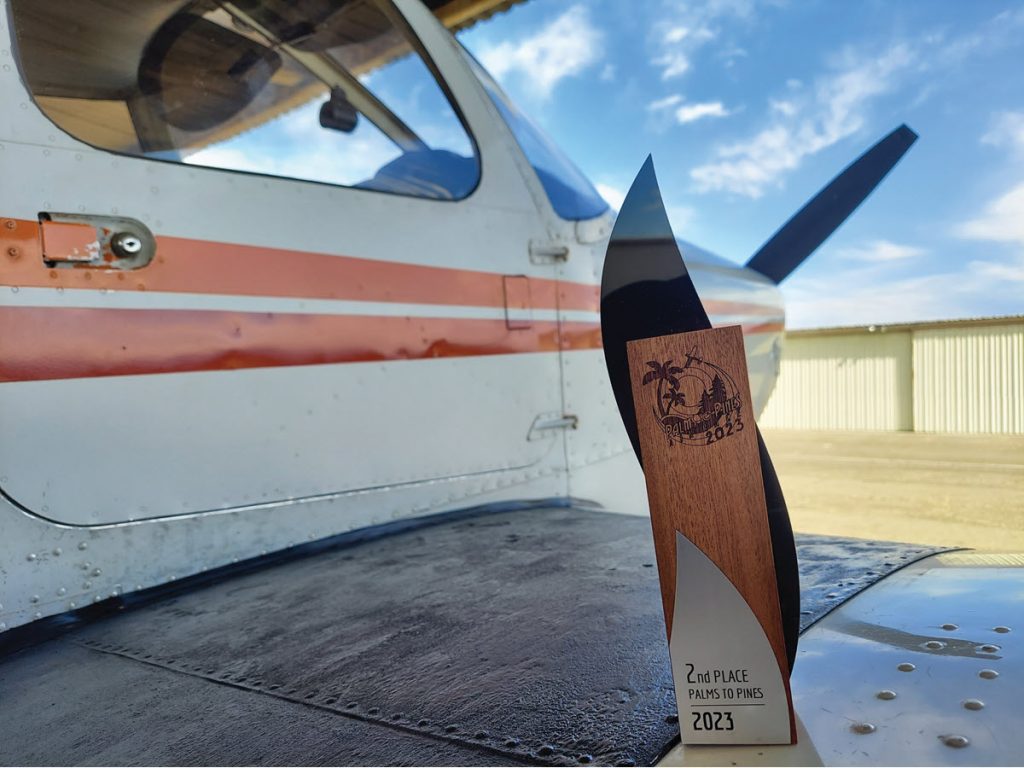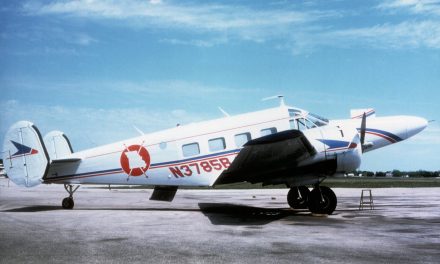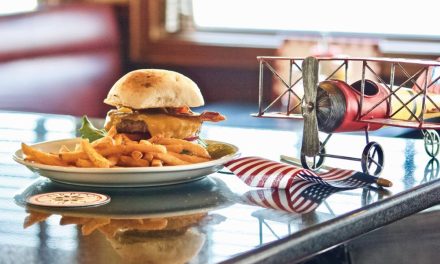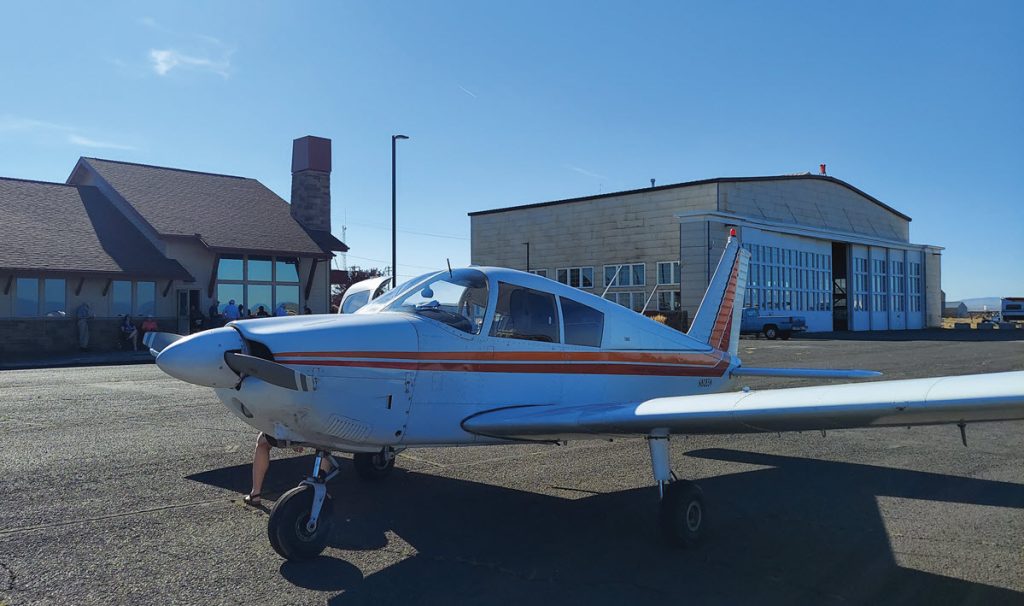
By Mary McEnroe
When the pandemic hit, life changed for many of us. Travel was limited, and most of my flying adventures were with the same few people, primarily flying Pilots N Paws missions or proficiency flights. In the past year as I approached my 50th birthday, I realized that when things opened up, I was so busy with work that I kept doing the same flights and hardly traveled. I decided to set a goal to do 50 new things in the year leading up to that half-century mark in my life. In the spring of 2023, I heard about the Palms to Pines Air Race and wondered … could I actually compete?
The Palms to Pines Air Race, founded in 1969, is an all-women air race from the palm trees in Southern California to the pine trees in central Oregon. The race ran for 40 consecutive years until 2009, when its founder, Claire Walters, passed away in early 2010. Until that time, it was the longest-running all-female air race. After a 13-year hiatus, the race was resurrected in 2022 by the Los Angeles Chapter of the Ninety-Nines, Inc. International Organization of Women Pilots. This past year’s race was held August 10-12, 2023, and covered nearly 750 miles beginning in Santa Monica, California, and ending in Madras, Oregon. While Palms to Pines builds on a long history of women’s air racing, there are other cross-country air races of varying lengths open to men and women alike.
Finding a Race Partner
I asked if any of my fellow members of the Santa Clara Valley Chapter of the Ninety-Nines had previously competed in the race, and Debby Cunningham quickly offered to be my race partner. Debby previously competed in the Palms to Pines Air Race 10 times and has also competed in the Havasu 600 Air Race. With just over 400 hours in my logbook, Debby brought a lot of race experience, as well as over 10,000 hours of flight experience, including the mountain flying experience I lacked. I knew I could learn a lot from Debby, and her experience gave me the confidence to enter the race in my 1965 Piper Cherokee 180.
Assigned a Handicap
Our Cherokee turned out to be the third-slowest plane in the race, but fortunately, the Palms to Pines Air Race isn’t based on who has the fastest plane. Each pilot flies a handicap flight where we determine the best performance of our respective planes, and we compete against our handicap. The plane must be as clean as possible for the handicap flight with no extra items in the plane, air vents closed, and full throttle. If the plane has an autopilot, you must use it in the handicap flight if you want to use it in the race. I washed the plane, removed everything except what’s required, and weighed items such as a seat cushion, clipboard, and cellphone for a stopwatch for the handicap data sheet. In the actual race, the plane will be heavier due to luggage, but will be lighter at times due to burning fuel.
Handicap flights are flown at a specified density altitude for specified time periods on cardinal headings. Ground speeds are recorded at specified intervals, and the flight takes around 30 minutes. Data is sent to the race organizers to determine your handicap. In the race, each pilot strives to beat the handicap through various techniques, or at the very least, tries to come as close as possible to the handicap speed. Penalties are assessed for not being at the specified altitude for a mandatory flyby, not flying to the end of the runway before turning after a flyby, missing or improperly stating mandatory radio calls before a flyby, etc.
On Your Six!
Debby and I were “Racer 6,” as we were the sixth team to enter the race. Our team name was “On Your Six,” a play on the race number and a bit of friendly competition to let the other teams know to watch out for us. Our handicap was 122.25 knots, faster than I’ve ever flown my Cherokee. It would take some work in the race to try to meet or beat that number, and we needed to do our best to avoid penalties. There were only two planes in the race with slower handicaps and both were Pipers. One was a Piper PA- 12 Super Cruiser, and the other was another Cherokee 180.
Prepping for the Race
My Cherokee had been out of service for a year awaiting a rebuilt engine and had almost 50 hours when we started the race. On Aug. 10, Debby and I departed Reid Hillview Airport in San Jose, California, for a 3.5-hour flight to Santa Monica, California, where we topped off the fuel, presented our required documents, and left the plane in impound. We dodged weather along the way, and I practiced my first high-speed flyby at the mandatory 200 feet above ground level. Talk about something out of my comfort zone, but what a thrill!
That evening, the racers, organizers, and volunteers had a chance to meet each other over dinner. We came from all over California, Oregon, eastern Washington, and even Idaho. The next morning, we woke to low ceilings and a forecast that showed a significant delay in getting off the ground. We headed to the airport for the scheduled briefing and spent the next four hours getting to know each other and watching the weather.
The First Leg: Over the Mountains
When the weather finally started to clear, it was a race to make it to the mandatory overnight stop in Red Bluff, California, with a required flyby in Salinas, California. The race must be completed under VFR conditions, and all planes must be on the ground before sunset.
The first leg involved climbing over mountains, requiring strategizing to clear terrain while going as fast as possible. Coming into Salinas, multiple planes were arriving within minutes of each other, and it was difficult to make the mandatory calls 10 miles, five miles, and one mile out for the flyby, adding some stress.
Following the flyby, we landed for fuel and were met by volunteers from the local Ninety-Nines who were timing the leg and providing refreshments.
The Second Leg and a Welcome Barbecue
The second leg to Red Bluff was straightforward and through mostly flat terrain. It was hot, but Debby and I are both competitive, so we kept our vents closed, hoping it would give us a bit of a speed advantage. We landed second to last, followed only by the Piper Super Cruiser.
The local Ninety-Nines and other local aviators welcomed us with a barbecue, where we answered questions about the race and encouraged others to consider racing. We then headed to the hotel where we did our flight planning and got some much-needed rest. In the morning, we met at the airport for another briefing. We were met by members of the community who heard about an all-women air race and wanted to see us off. It was great to see so much support for aviation and the racers.
The Third Leg: More Mountains and a Surprise Finish
From Red Bluff, we departed for Klamath Falls and began our flight over mountainous terrain. Due to fires in southern Oregon, the weather became smoky and was barely VFR. Despite the heat, we were thankful we had the vents closed because when we landed for fuel, the smell was thick in the air. We were the only plane to land, so we were the last to arrive in Madras, where the weather was clear and we were met with jokes that we would earn the “Tail End Charlie” Award. Little did they know how well we did. At the awards banquet, we received the award for second place!
My goal going into the race was to learn more about my plane, expand my comfort zone, improve my flying skills, and complete something I had never done before … and not come in last. Ironically, the Piper Super Cruiser, the slowest plane that entered, outperformed their handicap better than anyone else and won this year’s race.
The next day, we had a leisurely flight home and flew around beautiful Crater Lake, past Mount Shasta, and over Lake Shasta. After years of drought, it was great to see the lake so full. It was also nice to finally be able to open the air vents for a slightly cooler flight.
An Amazing Learning Experience
Before entering the race, I considered myself a conservative pilot. I earned my private pilot certificate in 2017 and earned my seaplane rating last year. I fly in the busy Bay Area in California and typically stay within a few hours of my home airport, so I had very little experience flying over mountainous terrain. Much of my flying is done for Pilots N Paws charity flights or taking friends and colleagues up to expose them to general aviation. I usually select “safe” routes following roads and fly at altitudes where I have plenty of time to make decisions in case of an engine failure. Air racing requires direct routes with as little climbing as possible to maintain speed. It’s faster than I usually fly, often toward the high end of the yellow arc, and it requires carefully monitoring gauges to ensure you don’t overheat the engine. This was something I was acutely aware of with my new engine.
The air race was a rewarding experience. I expanded my comfort zone and pushed my plane to see what it was capable of doing. I learned how to strategize routes, altitudes, climbs, and descents to maximize speed over the long haul, but I won’t give away these secrets, or I may lose the competitive advantage for my next race. And there will be a next race!
Other Races
Are you interested in testing your skills at air racing? Check out these other cross country air races. Each has its own entry requirements, including minimum hours as pilot in command (some are as low as 50 hours), type of aircraft eligible, etc.
Co-ed Races
- The Ninety-Nines organized a co-ed event called the ARC Air Derby, now in its third year. It’s a virtual race in which pilots design their own route to meet race requirements, allowing people from anywhere in the country to participate. Like the Air Race Classic, the ARC Air Derby tests your piloting, flight planning, and navigation skills, as the goal is to come as close to your estimated time to complete the race as possible. Teams are scored based on how close they come to their own estimates and awards are presented at a virtual awards ceremony. For more information, visit derby.airraceclassic.org.
- The Havasu 600 is a co-ed race organized by the Rio Colorado Chapter of the Ninety-Nines. The race honors the memory of veteran racers Bessie “Tookie” Hensley and her husband, Don Hensley. The race raises money to fund flight scholarships in the couple’s name. This two-day race starts in Bermuda Dunes and terminates in Lake Havasu, Arizona. For more information, email riocolorado99s@gmail.com.
- In 1965, the Hayward Air Rally got its start as a personal challenge between city officials. This co-ed race claims to be the longest continually running proficiency flying event in North America. The event starts or ends in Hayward, California, and was recently shortened to a single-day race, making it more attractive to pilots who can’t commit multiple days to racing. Participants calculate their anticipated flight time and fuel consumption for the route. Scoring is based on the performance of the flight as compared to the pre-established estimates. The course tests good-old-fashioned flight planning, pilotage, and dead reckoning skills, although options are available for those who wish to use GPS. For more information, visit hwdairrally.org.
- If you’re heading to Oshkosh, Wisconsin, for the annual EAA AirVenture, consider joining the AirVenture Cup Race. This co-ed cross country race started in 1997 with a race from Kitty Hawk, North Carolina, to Oshkosh, Wisconsin. The course is now selected annually and covers between 400 to 500 miles in a single day. It includes 19 classes of aircraft, including both experimental and certified aircraft. For more information, visit airventurecuprace.com.
- The Sport Air Racing League (SARL) began with a single race in November 2006 and now hosts multiple air races annually in varying locations. Membership is required in addition to race entry fees. Current dues vary from $25 to $125. Members can sign up to host and organize a race, and entry requirements vary, but races are co-ed. For more information, visit sportairrace.org.
Women’s Races
- As mentioned in the main article, the Palms to Pines Air Race is a two-day race organized by the Los Angeles Ninety-Nines and is open to women pilots who hold at least a private pilot certificate. Originally founded in 1969, the race runs from the Los Angeles area to central Oregon, covering nearly 750 miles. For more information, visit palmstopinesairrace.com.
- The Air Race Classic, an all-women air race tracing its roots to the 1929 Women’s Air Derby, is in its 47th year. The route varies annually but covers approximately 2,400 miles in four days. It’s the ultimate endurance race, testing your piloting, navigation, and flight planning skills. This year’s race started in North Dakota and ended in Florida, while zig zagging through multiple states. For more information, visit airraceclassic.org.
If you’re looking for a way to improve your flying skills, want to challenge yourself, or are just looking for something new to do, consider participating in an air race. If you belong to a flying club or a chapter of a flying organization, consider organizing an air race as a fundraiser for scholarships to support the future generation in aviation. It just might be the most fun you’ve had in aviation in a long time.
Mary McEnroe is a program manager for a municipal electric utility and a private pilot with single engine land and sea ratings. She is actively involved in her local chapter of the Ninety-Nines and is a student pilot mentor. She also volunteers for the Oregon International Air Show and flies Pilots N Paws missions.

